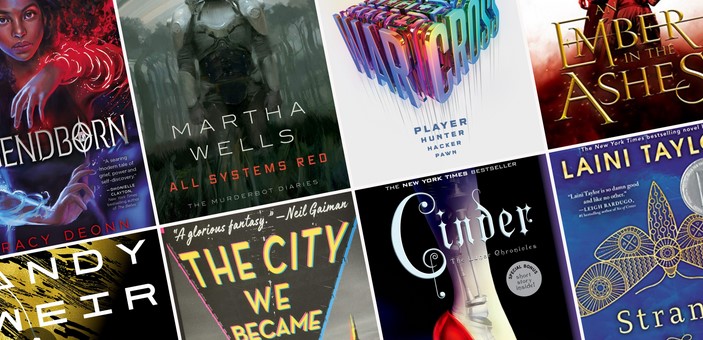The evolution of books from print to digital marks a significant transformation in how we access, read, and share information. For centuries, print books were the primary medium for reading, but the rise of digital technology has reshaped the publishing industry. Today, eBooks, audiobooks, and digital libraries provide a new way to engage with literature. In this post, we’ll explore the journey of books from the traditional printed page to the modern digital format, highlighting key milestones in their evolution.

The Print Era: A Traditional Approach to Reading
For centuries, print books were the dominant form of reading material. The history of printed books began in the 15th century with the invention of the printing press by Johannes Gutenberg. This invention revolutionized the way books were produced, making them more accessible and affordable. Before the printing press, books were hand-copied, a time-consuming and expensive process. With the advent of mass printing, books became available to a broader audience, leading to the spread of knowledge and ideas.
Print books remained the primary form of literature for hundreds of years. Libraries and bookstores became centers of learning and culture, with people eagerly seeking new titles to read. The tactile experience of holding a book, flipping through its pages, and even smelling the paper became an integral part of the reading experience. Despite advancements in technology, print books continued to be cherished for their physicality and the immersive experience they provided to readers.
The Rise of Digital Technology: Early Beginnings
The digital revolution in the world of books began in the late 20th century with the introduction of e-readers and digital formats. The first eBooks were simple text files that could be read on computers, but it wasn’t until the early 2000s that dedicated e-readers, such as the Sony Reader and Amazon Kindle, made digital reading more accessible. These e-readers allowed people to store and carry hundreds of books in a lightweight device, revolutionizing the reading experience.
The popularity of eBooks surged as more publishers began offering digital versions of their books. Digital books provided convenience, with readers being able to instantly purchase and download books from online stores. In addition, eBooks often came at a lower cost than print editions, making them an attractive option for many readers. This shift towards digital books began to change the way people interacted with literature, providing a more flexible and on-demand reading experience.
The Impact of Smartphones and Tablets on Digital Reading
The next significant leap in the evolution of books came with the advent of smartphones and tablets. As mobile technology advanced, more people began using their smartphones and tablets to read books. With apps like Amazon’s Kindle app and Apple Books, readers could now access eBooks on devices they already carried with them everywhere. These devices allowed readers to read anytime and anywhere, further increasing the convenience of digital books.
Additionally, smartphones and tablets introduced new features such as adjustable font sizes, backlighting for reading in the dark, and even text-to-speech capabilities. These innovations made digital books more accessible to a wider audience, including those with visual impairments or learning disabilities. The versatility of mobile devices meant that reading could fit seamlessly into a reader’s lifestyle, whether they were commuting, traveling, or relaxing at home.
The Rise of Audiobooks: A New Dimension of Digital Books
Alongside eBooks, audiobooks have gained significant popularity in recent years. With the rise of podcasting and audio streaming services, audiobooks offer a new way to engage with books. Audiobooks allow readers to listen to books instead of reading them, providing a hands-free option for those with busy lives. With the development of services like Audible and libraries offering digital audiobook loans, the audiobook industry has grown tremendously.
Audiobooks offer a different experience compared to print or eBooks, as they allow readers to hear the nuances of the narrative through voice acting and sound effects. For many, audiobooks have become a convenient and enjoyable way to experience literature, especially when multitasking or during long commutes. The popularity of audiobooks demonstrates how digital books have evolved beyond the written word to include new forms of storytelling.
The Future of Books: Interactive and Immersive Reading
The evolution of books from print to digital continues to evolve as new technologies emerge. The future of books may include even more interactive and immersive reading experiences. Virtual reality (VR) and augmented reality (AR) technologies could transform how we interact with stories. Imagine reading a book where the characters come to life through AR or experiencing an immersive VR environment that places you within the story itself. These advancements offer exciting possibilities for how we experience literature in the future.
Additionally, the integration of artificial intelligence (AI) may lead to personalized reading experiences. AI could recommend books based on a reader’s preferences, or even adapt the content of a story based on the reader’s choices, creating a more dynamic and individualized experience. The potential for digital books to evolve in these ways is limitless, and the future holds exciting possibilities for readers and writers alike.
Exploring Meaning and Online Entertainment
Thingsmeanalot.com explores the significance of various items and experiences in our lives. For those seeking alternative online experiences, explore more at www.wolfwinner.fun. Discover a new world of online fun.
Conclusion
The evolution of books from print to digital has transformed the way we read and interact with literature. From the invention of the printing press to the rise of eBooks, audiobooks, and mobile devices, technology has made reading more accessible, convenient, and diverse than ever before. As digital books continue to evolve with advancements like virtual reality and artificial intelligence, the future of books promises even more exciting possibilities. Whether you prefer the tactile experience of print books or the convenience of digital formats, the world of literature has never been more dynamic and accessible.











One thought on “The Evolution of Books from Print to Digital”
Comments are closed.